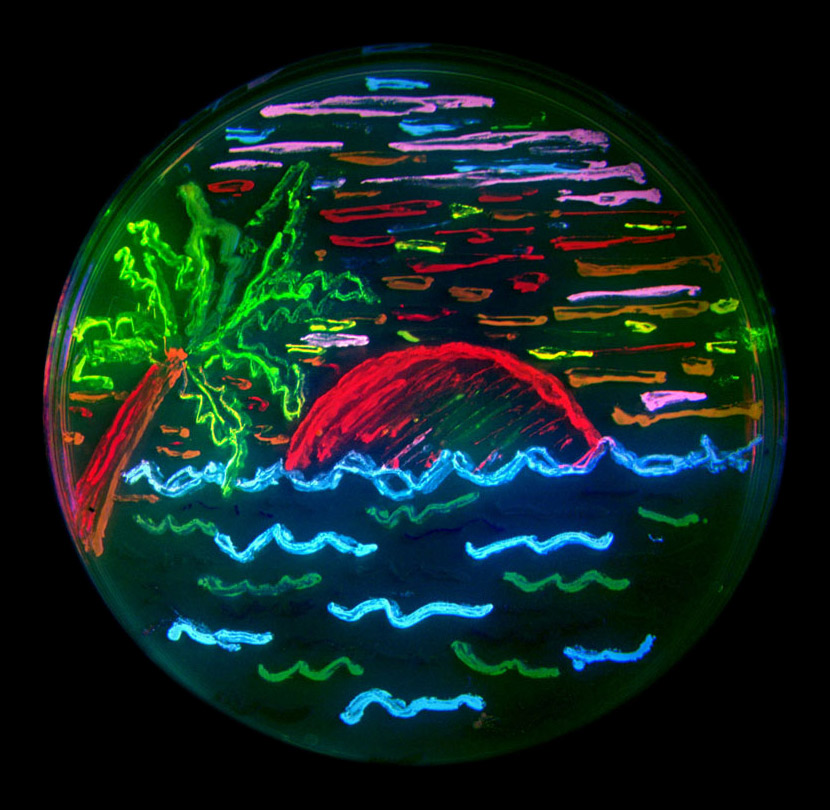 The image to the left is a San Diego (in southern California, USA) beach scene painted using differently coloured bacteria, by Nathan Shaner and Paul Steinbach. A protein that fluoresces green was discovered in jellyfish. If you insert the gene for this protein into bacteria, then they fluoresce green. Then you can paint in green with these bacteria, using a plate covered by a layer of food that the bacteria will grow on. This green fluorescent protein has now been engineered to produce blue, yellow, etc versions so you can make and then paint with bacteria with all these colours.
The image to the left is a San Diego (in southern California, USA) beach scene painted using differently coloured bacteria, by Nathan Shaner and Paul Steinbach. A protein that fluoresces green was discovered in jellyfish. If you insert the gene for this protein into bacteria, then they fluoresce green. Then you can paint in green with these bacteria, using a plate covered by a layer of food that the bacteria will grow on. This green fluorescent protein has now been engineered to produce blue, yellow, etc versions so you can make and then paint with bacteria with all these colours.
Now, this is very pretty, but you may be thinking it is about as much use as these officials UEFA have put behind the goal lines in Euro2012 matches. This is not so. What reminded me of this painting is a meeting I had with my biologist collaborators at King’s College London.
They have attached the green fluorescent protein to a protein called dystrophin. When the gene for dystrophin is mutated the protein is not made and this is the cause of the genetic disease Duchenne muscular dystrophy. They attached this fluorescent protein to dystrophin so they can see where it is in muscle cells.
As proteins are only maybe 10 nanometres across, locating them in cells is not at all trivial. And if you don’t know where they are it is hard to know what they are doing, and how they are causing or preventing disease.
This work is not published so I can’t show it to you. But the technique of attaching a fluorescent protein to another protein to see where that protein is, is a very common. The figure here is from a paper so the caption is rather technical, but the green blobs are the protein BRCA1. You may have heard of the BRCA1 and BRCA2 genes and proteins. Inherited mutations in them make women much more prone to breast cancer. Seeing them is one step to understanding why.
